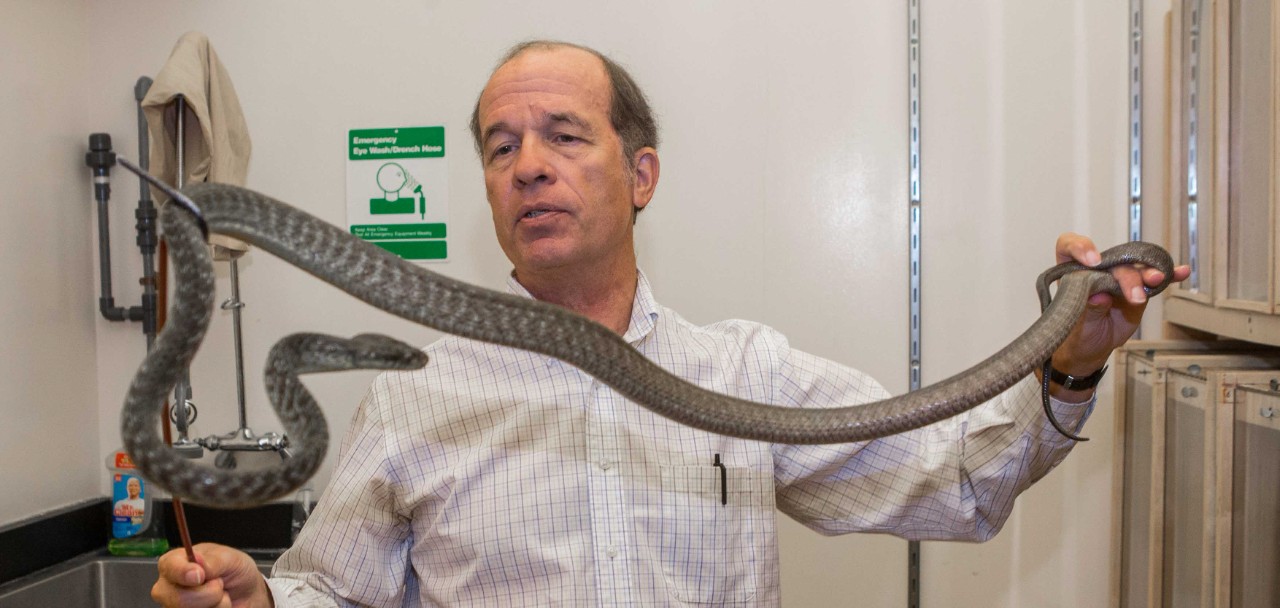
Biologist unlocks mechanics of snake motion
New York TV station highlights UC's discoveries about snake locomotion
WWOR-TV highlighted discoveries by the University of Cincinnati about the unique ways that snakes can move.
The program Science Now features interesting discoveries funded by the National Science Foundation. It profiled the work of UC College of Arts and Sciences Professor Bruce Jayne, who has been unlocking the surprising ways limbless reptiles have conquered oceans, deserts, grasslands, forests and suburbia.
In his biology lab, Jayne has documented in detail the many ways that snakes can move:
- Rectilinear: The snake contorts its skin to propel the snake forward in a straight line. This is especially easy to observe in heavy-bodied snakes such as pythons.
- Lateral undulation: This is the side-to-side movement of snakes as if they were traversing a slalom sometimes called serpentine locomotion.
- Sidewinding: Common to some rattlesnakes, this locomotion requires the snake to lift much of its body off the ground to propel it in a sideways direction on loose sand or slippery terrain.
- Concertina: The coiling and uncoiling of snakes like a spring.
- Lasso locomotion: The unique way that some climbing snakes such as brown tree snakes can climb wide cylinders by wrapping themselves around them. Jayne discovered and described this unique behavior in a study published in 2021.
Jayne says there are other variations of these movements that have helped snakes thrive wherever they are found.
Featured image at top: UC Professor Bruce Jayne works with a brown tree snake. Photo/Joseph Fuqua II/UC

UC College of Arts and Sciences Professor Bruce Jayne studies the amazing abilities of snakes in his biology lab. Photo/Joseph Fuqua II/UC
Related Stories
Don't make it easy for thieves to steal your car
January 9, 2026
Professor Cory Habermann speaks to Spectrum News 1 on car theft.
Removing Barriers to Higher Education
January 8, 2026
Cincinnati media covered the rollout of the Bearcat Affordability Grant which provdes a pathway to tuition-free college for students of famlies who make less than $75,000 per year and are residents of the state of Ohio.
The biggest skin-care trends of 2026 go back to basics
January 8, 2026
The University of Cincinnati's Kelly Dobos was featured in an Allure article discussing the biggest skin-care trends of 2026.
